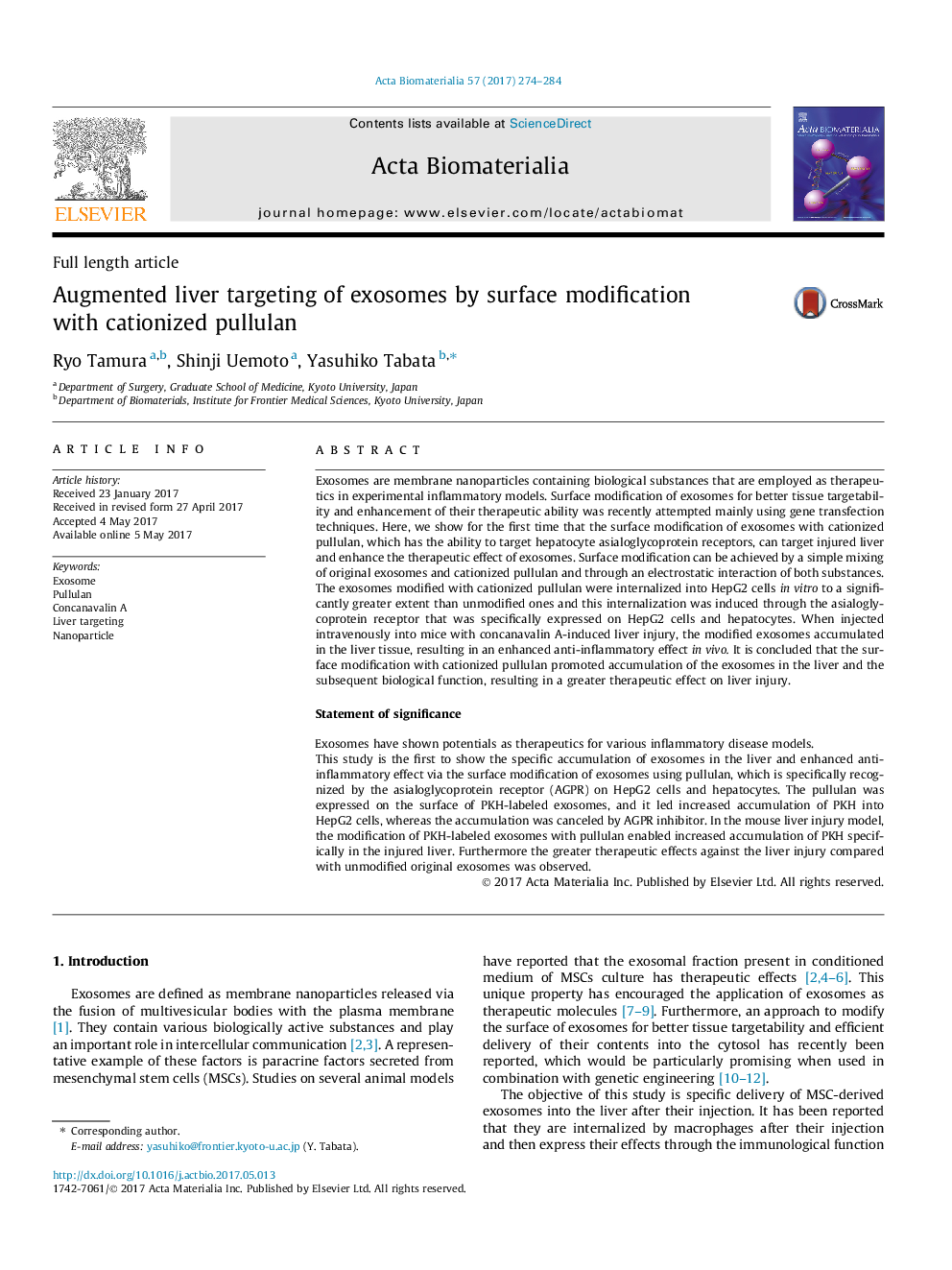| Article ID | Journal | Published Year | Pages | File Type |
|---|---|---|---|---|
| 6449131 | Acta Biomaterialia | 2017 | 11 Pages |
Exosomes are membrane nanoparticles containing biological substances that are employed as therapeutics in experimental inflammatory models. Surface modification of exosomes for better tissue targetability and enhancement of their therapeutic ability was recently attempted mainly using gene transfection techniques. Here, we show for the first time that the surface modification of exosomes with cationized pullulan, which has the ability to target hepatocyte asialoglycoprotein receptors, can target injured liver and enhance the therapeutic effect of exosomes. Surface modification can be achieved by a simple mixing of original exosomes and cationized pullulan and through an electrostatic interaction of both substances. The exosomes modified with cationized pullulan were internalized into HepG2 cells in vitro to a significantly greater extent than unmodified ones and this internalization was induced through the asialoglycoprotein receptor that was specifically expressed on HepG2 cells and hepatocytes. When injected intravenously into mice with concanavalin A-induced liver injury, the modified exosomes accumulated in the liver tissue, resulting in an enhanced anti-inflammatory effect in vivo. It is concluded that the surface modification with cationized pullulan promoted accumulation of the exosomes in the liver and the subsequent biological function, resulting in a greater therapeutic effect on liver injury.Statement of significanceExosomes have shown potentials as therapeutics for various inflammatory disease models.This study is the first to show the specific accumulation of exosomes in the liver and enhanced anti-inflammatory effect via the surface modification of exosomes using pullulan, which is specifically recognized by the asialoglycoprotein receptor (AGPR) on HepG2 cells and hepatocytes. The pullulan was expressed on the surface of PKH-labeled exosomes, and it led increased accumulation of PKH into HepG2 cells, whereas the accumulation was canceled by AGPR inhibitor. In the mouse liver injury model, the modification of PKH-labeled exosomes with pullulan enabled increased accumulation of PKH specifically in the injured liver. Furthermore the greater therapeutic effects against the liver injury compared with unmodified original exosomes was observed.
Graphical abstractDownload high-res image (126KB)Download full-size image
